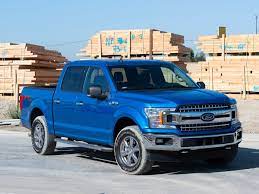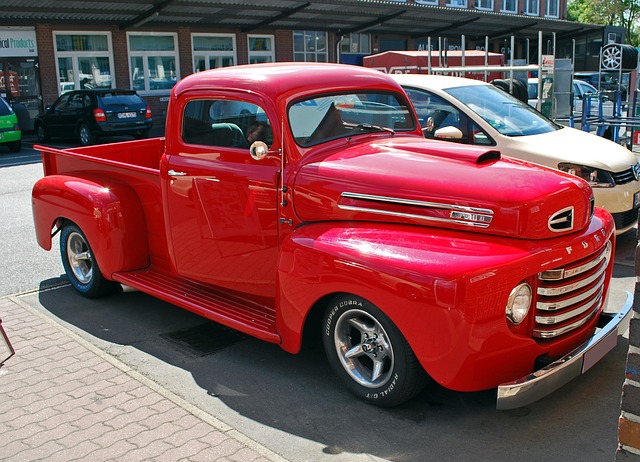KBB Truck Pricing Guide

Kelley Blue Book is one of the best places for a truck pricing guide for you to go to. You will be able to find a variety of trucks and what they would cost you. Knowing the different types and prices can help narrow down the type of truck you are looking for. There are many different types of trucks out there, so you should see which ones interest you and then research them on Kelley Blue Books before seeing a dealership in person.
Kelley Blue Book has been publishing guides to used vehicle values since 1926. It was originally called “Blue Book,” but the official title is now “Kelley Blue Book”. The company offers up-to-date pricing for cars, trucks, and motorcycles. The guides are based on data collected from dealerships around the country.
To find your ideal truck, you can use their search option to sort by model year, price, mileage, and transmission. You can also refine your search by selecting your choice’s body and engine type. You can see examples of photos of each one if you want to compare models side by side. Kelley Blue Book has all the information you need to help find your perfect truck at an affordable cost.
Pricing is updated at least weekly to reflect market conditions and provide dealers and consumers with the most up-to-date pricing.
Values offered by KBB
1. Retail Value:
It is an estimate of a dealer’s listing price for that vehicle if it were for sale to the general public. This value is based on actual selling prices of trade-in vehicles taken from recent auction results.
2. Private Party Value:
It is an estimate of a dealer’s listed price for that vehicle if it were for sale to a private party and does not involve any trade-in. This value does not include freight, administrative and handling, or the dealership’s preparation charges.
3. Trade-In Value:
It is an estimate of the value of your trade-in vehicle and any associated depreciation. Actual trade-in values vary greatly with mileage, usage, and condition. This value is based on the current local market conditions of used vehicles and reflects your local market. There are three types of trade-in-value in KBB.
A. Rough Trade-In: This is the dealer’s estimated value of a trade-in vehicle on display (for example, a vehicle in good condition).
B. Clean Trade-In: This is the dealer’s estimated value of a trade-in vehicle that has been professionally detailed and serviced (for example, an excellent condition vehicle).
C. Average Trade-In: This is the average of all estimated values from Good to Excellent condition vehicles.
4. Residual Value:
This is the anticipated market value of a vehicle at the end of its lease period. It includes an estimate of future interest, inflation, and depreciation deductions (market value) and reflects current leasing trends. Residual values are provided in both fixed-rate and percentage-of-miles-traveled forms.
The residual value for a leased vehicle should be considered in determining lease costs, but it may involve estimation on your part if this information is not available from your dealer or lender. All residual values are provided as the manufacturer’s suggested retail list prices (MSRP).
5. Estimated Retail Value:
It is an estimate of what a dealer would be reasonably able to sell this vehicle for after preparation costs are removed. This value does not include freight, administrative and handling, or the dealership’s preparation charges.
The final sale price will likely be less due to any number of reasons including the condition of the vehicle, reconditioning costs, sales tax, and/or other charges associated with the sale (i.e., financing) that are not included in retail value for that particular vehicle.
Factors for obtaining the best-used truck for your money
1. Proper valuation of the truck:
The most important item to look for when purchasing a used truck is the repair history of the truck. A truck with a good reputation will have a lower selling price.
2. Being aware of the truck selling points:
Look for trucks that have been in accidents, but are not currently written off by their insurance companies many of which are being written off falsely by the companies.
Possibilities are that they are just unaware of their vehicle’s history and not aware if they should be cautious or want to know how much it would cost them if they decided to claim it on their insurance policy.
It is always a good idea to ask the dealers “how much is it worth”. This way you can be aware and know what your truck should be worth.
3. Ask about the amounts of money that are being spent for repairs regularly:
A truck with a good reputation and low normal repairs will be more costly in repair costs than a new one in the same situation and condition. Trucks that are in great condition will end up selling for a higher price than one that has been in an accident and keeps having repairs made.
4. The importance of the truck’s engine:
You must check the truck’s engine and ask the seller if they have any other trucks that you can look at to compare their engines. You should be able to see if it is smoking or making noises. If there are problems with the engine, then you should not purchase it due to its significance in a truck being able to move. When comparing prices, be sure that the truck is comparable in age and model year.
Conclusion:
In conclusion, when you are trying to find the best-used truck, it is very important to find a truck with a good repair history, a good engine, and one that has been in an accident. The truck should be inspected before purchasing it and be sure to ask questions about the repairs and maintenance. If you can follow these guidelines and use their guides, then it should help you in finding the best-used truck for your money.

